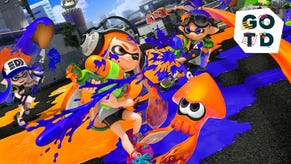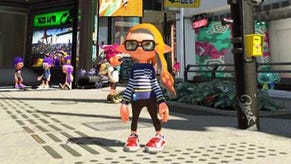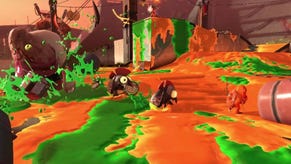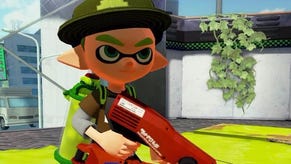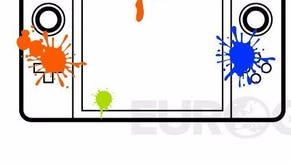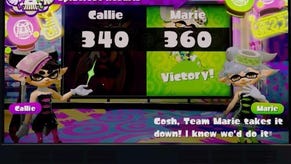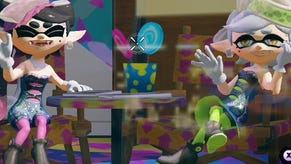Tech Analysis: Splatoon
Digital Foundry's initial impressions on Nintendo's brand new shooter.
We recently had a chance to take a closer look at a near complete build of Splatoon and, with two months remaining until release, the game is looking remarkably polished. Equipping players with paint guns instead of gaming's typical selection of assault rifles and other high calibre weaponry, Nintendo has approached the multiplayer arena shooter with fresh eyes, resulting in a fresh new experience that is welcoming for hardcore and casual players alike. Despite its unfamiliarity with the genre, Nintendo has manages to produce a visually striking game that delivers a level of polish one would expect from any of its high-profile releases.
At its heart lies the foundation of a proper shooter and as such, a stable frame-rate is a must. Fortunately, even in its unreleased state, Splatoon delivers a near flawless 60fps update across the board with only the occasional dropped frame detracting from the fluidity - mostly unnoticeable in action, and something that could well be ironed out in the game's final run of optimisation. The chaotic nature of the game mixed with a free aiming system certainly presents a performance challenge beyond the scope of most Nintendo games, but the results here are uniformly excellent. Without pushing the limits of the final game we can't give our final verdict on the matter but, at this stage, things are looking very good indeed.
Unfortunately, image quality isn't quite as impressive with Nintendo targeting an expected 1280x720 without any sort of anti-aliasing to smooth out the edges. The visual design does a good job of minimising aliasing but we can't help but feel that a bit of AA would have made a huge difference here. Distant structures often appear jagged while finer details are lost to shimmering but, overall, the look works. In fact, the strong visual language and bright colors distinctly recall the burst of creativity Sega enjoyed during the tail-end of the Dreamcast era.
Perhaps the most interesting visual element in Splatoon lies in its use of brash colour. The paint mechanic is key to the gameplay, allowing players to freely cover the entire stage in their assigned colours in order capture territory. It's a neat implementation that appears rather similar to the gels in Portal 2, which used surface-embedded sprites to efficiently paint the level while dodging potential visual artefacts. The way in which paint gradually layers over the environments or opposing colours is quite effective and nice shader work gives the paint an appropriate gloss.
Other visual elements appear strong as well - the industrial visual design is mixed with bright colours and strong lighting that help to build a vibrant, inviting world to play in. The game world is bathed in nicely filtered shadow maps while texture work appears relatively sharp - though perhaps unsurprisingly, anisotropic filtering is not employed here. The animation quality is also excellent across the board and helps give the cute characters real personality as they dive in and out of the paint soaked playground. The skybox even makes use of a nice soft focus depth of field effect creating a nice sense of scale. Overall it's a lovely game with a look all its own.
From what we've seen thus far, Splatoon holds a lot of promise. We've been disappointed by the number of unfinished games reaching the market lately, so it's a pleasant surprise to find an actual work-in-progress game in such spectacular shape some way out from its eventual release. In short, it's a beautiful new game in a genre Nintendo has typically avoided, filled with plenty of new ideas.
Even at this stage it seems to be yet another case of Nintendo doing what Nintendo does best; delivering high performance games that maximise the capabilities of the target platform. Despite the recent doom and gloom surrounding the Wii U with Nintendo's recent jump into mobile gaming and the early announcement of its new NX console, the Nintendo's existing hardware continues to deliver some great experiences. The Wii U's medium to long term future may look uncertain, but the creative fires of the developer still burn bright. Based on what we've seen of Splatoon so far, Nintendo continues to produce some of its more polished and visually satisfying games yet.



